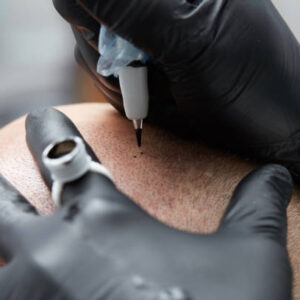Understanding the Different Belly Button Types
The belly button, a small indentation on the stomach, is something most people don’t think much about. Yet, it can come in various shapes and sizes, which raises a common question: What are the different belly button types? The appearance of your belly button may not seem significant, but it actually holds some unique features about you. There are generally two types: innie and outie belly buttons. These differences can be shaped by your genes, your development in the womb, or your health.
Let’s explore these types more deeply to understand their meaning and how they relate to your body.
How to Identify Your Belly Button Type
Innie Belly Button
The most common belly button type is the “innie.” If you have an innie, your belly button looks like it’s sunken into your abdomen. This is typically a normal, healthy belly button, and it’s often the result of how the umbilical cord is attached during birth. Over time, this area may form a small depression as the cord stump falls off and the scar tissue heals.
Outie Belly Button
If you have an outie, your belly button protrudes slightly outward. This is much less common, affecting only a small percentage of people. An outie is usually caused by the way the umbilical cord is attached or the way the tissue heals after birth. It’s important to note that outie belly buttons are typically harmless and don’t suggest any underlying health issues.
Variation in Belly Button Shapes
While innie and outie are the two main categories, your belly button could also be a mix of both, taking on an irregular shape. This could mean your belly button has a deeper dip or a more pronounced outward curve. These variations can be influenced by genetics, your body weight, or even pregnancy.
What Does Your Belly Button Type Say About You?
Your belly button type can hold some symbolic significance in different cultures or beliefs. While there’s no scientific evidence linking belly button types to personality traits, some cultures believe certain characteristics are tied to the appearance of your belly button.
The Psychological Meaning of Your Belly Button
In some traditions, belly button types are thought to reflect a person’s character. For example, people with innies may be seen as introverted, while those with outies are often believed to be more extroverted. These ideas are rooted in cultural beliefs rather than scientific fact, but they can still be fun to consider.
Cultural Beliefs Around Belly Button Types
In many cultures, the belly button is seen as a symbol of connection, life, and energy. For instance, in some cultures, an innie may be viewed as a sign of inner strength and calmness, while an outie is thought to symbolize external energy or a more outgoing personality. These beliefs, however, vary greatly from one culture to another.
Are Belly Button Types Linked to Personality?
There is no scientific proof linking belly button types with personality. However, some may feel that their belly button’s appearance somehow reflects their inner nature. People with unique or unusual belly button shapes might embrace the idea that they’re special, while others may simply enjoy how their belly button looks.
Belly Button Types and Health: What You Should Know
While the appearance of your belly button may seem trivial, it is essential to consider the health aspect. Your belly button is a sensitive part of your body, and, like other body parts, it can encounter health issues that must be addressed.
Belly Button Health and Wellness
Your belly button health and wellness should not be overlooked. It’s crucial to maintain cleanliness in the belly button area to avoid infections, irritation, or buildup of dirt. A simple cleaning routine can keep the area healthy and free from any potential issues.
Common Belly Button Issues You Must Be Aware Of
Some of the most common issues related to the belly button include infections, particularly if the area isn’t cleaned regularly. Bacteria can accumulate, leading to infections that cause itching, redness, or even discharge. In rare cases, an infection could spread deeper into your skin or surrounding tissue.
Another issue that some people face is an umbilical hernia. This condition happens when part of the intestine pushes through the abdominal wall near the belly button. It’s most common in infants but can occur in adults as well. Symptoms may include swelling or pain around the belly button area. If you experience these, it’s important to seek medical advice.
How to Take Care of Your Belly Button for Health
Keeping your belly button clean is a simple but vital part of belly button health. Regularly wash the area with warm water and mild soap. If you have an innie, be gentle when cleaning, as it can trap dirt and sweat inside. Use a cotton swab to reach the deeper areas of the belly button. If you notice any redness, swelling, or unusual discharge, it’s important to consult a healthcare provider.
Can Belly Button Types Affect Your Self-Esteem?
A belly button is something many people overlook, but for some, it can be a source of self-consciousness. Whether your belly button is an innie, outie, or has a unique shape, it can have an effect on how you feel about your body.
The Impact of Belly Button Appearance on Confidence
Many people feel insecure about their belly button appearance. Some may find themselves wishing they had a different belly button shape, especially if it doesn’t fit the societal “ideal.” It’s important to remember that everyone’s body is different, and your belly button is just one small part of who you are.
Dealing with Body Image Issues Linked to Belly Buttons
If you’re struggling with body image issues related to your belly button, it’s crucial to understand that these insecurities are often driven by unrealistic beauty standards. It’s natural to have moments of self-doubt, but you must remember that your value isn’t determined by the shape of your belly button or any other body feature.
Tips for Maintaining a Healthy Belly Button
Maintaining the health of your belly button is simple and requires only minimal care. Whether you have an innie or an outie, taking the right steps can help prevent common issues.
How to Clean Your Belly Button Properly
The most important step is keeping your belly button clean. If you have an innie, be extra gentle while cleaning the area. Use a mild soap and warm water to wash around the belly button. If you have an outie, the cleaning process is a bit easier, but you should still ensure that the area is kept free of dirt and bacteria.
When to Seek Medical Help for Belly Button Problems
If you notice any pain, swelling, discharge, or a persistent odor around your belly button, it could be a sign of an infection or other health problem. Seeking medical advice as soon as possible is crucial to preventing the condition from worsening.
Preventing Belly Button Infections and Irritations
Belly button infections can often be prevented with regular cleaning and hygiene practices. Avoid using harsh chemicals or fragrances around the area, as they can irritate the sensitive skin. If you pierce your belly button, make sure to follow proper aftercare instructions to prevent infections.
This guide provides a detailed overview of the different belly button types, their significance, and how to care for them properly. Whether you have an innie or an outie, understanding your belly button’s health is an important part of maintaining overall wellness.


